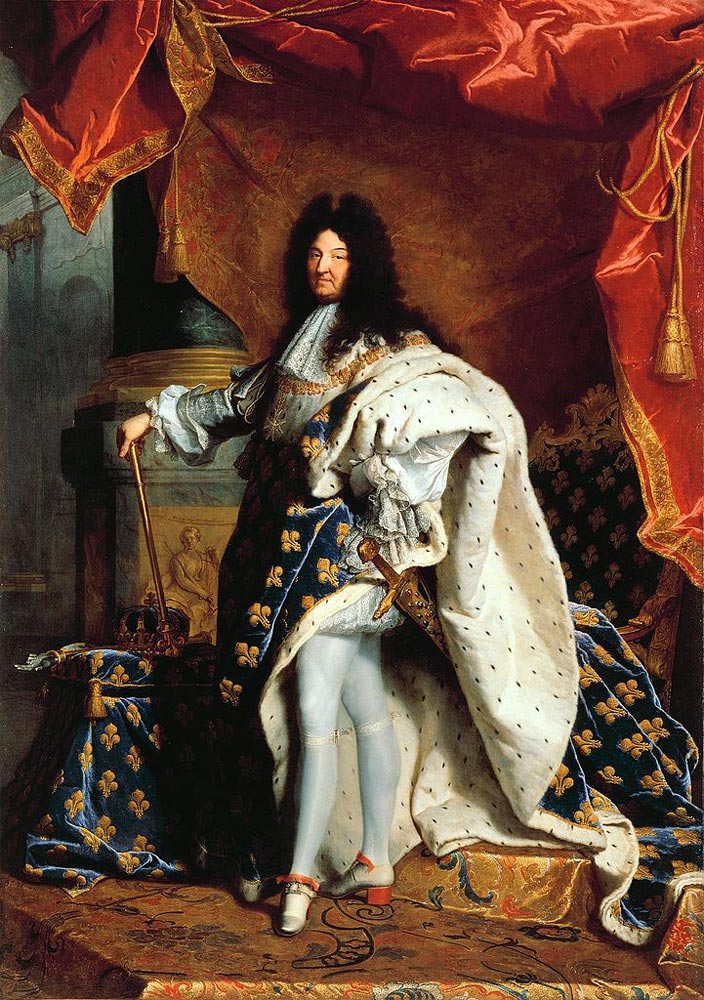Louis XIV rose to power when he was only five years old. His mother served as regent until he was educated enough to become ruling king. Louis XIV was politically educated by Cardinal Mazarin, he chose the sun for his emblem. He is frequently referred to as “The Sun King” to this day.
His influential years were marked by revolutionary actions against his mother and political adviser. These actions were referred to as “La Fronde.” Louis XIV disliked Paris immensely and had a great fear and distaste for revolutionaries and those working against the monarchy. This contributed to his decision to later move to Versailles permanently. He married Marie Therese, an Infanta from Spain, solidifying the relationship between France and Spain.
The Death of Cardinal Mazarin
When Louis XIV was 23 years old, Cardinal Mazarin died. Louis XIV shocked the country of France by becoming his own chief minister. This had several implications. First, the “reign of the cardinal ministers,” in which a religious minister had the ear of the king, was effectively over. After a difficult few years, Louis XIV started to manage all of the state’s affair through the help of ministers whom were not employed by government, but rather called and dismissed by the king when necessary. Unlike monarchs before him, he excluded family members and old nobility.
He worked with his finance minister Jean-Baptise Colbert during the early years. He reorganized several financial and administration aspects of the government at the time and expanded urban law enforcement to create a police force in Paris. He also expanded the French navy and the French army.
An Aggressive King
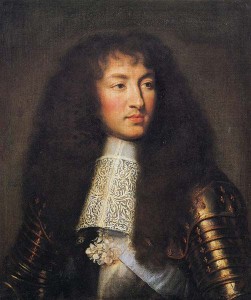 Louis XIV believed in forceful foreign policies. He fought in several wars for land, two of which were against the Dutch. He was successful only in the first one, but he managed to gain a considerable amount of territory during the second war.
Louis XIV believed in forceful foreign policies. He fought in several wars for land, two of which were against the Dutch. He was successful only in the first one, but he managed to gain a considerable amount of territory during the second war.
In light of these wars, the growing size and might of the French army and other rising political tensions in Europe, many countries stopped being allies with France during this time. This led to the country becoming isolated.
Louis XIV and The Arts
The idea of glorifying the monarchy and himself through the arts was incredibly appealing to King Louis XIV and his finance minister Jean-Baptiste Colbert. Under him, French literature and art flourished. The government developed several academies which specialized in writing, music and architecture.
Louis XIV believed in propaganda and hired many artist to paint several different works of him. He did this so that his face would be preserved and he would be seen everywhere. Artists were also commissioned to paint important moments during the king’s ruling such as his many victories in war. Artists also depicted the king, like monarchs before him, in mythological situations which showed him as having great power physically and mentally.
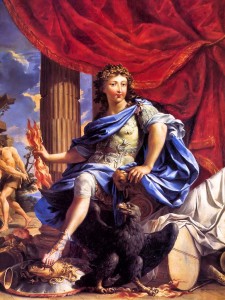 Louis XIV was patron of The Académie Française. The Louvre was originally intended to be built upon and expanded as a royal residence, but it was given over to the arts and to the public after court relocated to Versailles.
Louis XIV was patron of The Académie Française. The Louvre was originally intended to be built upon and expanded as a royal residence, but it was given over to the arts and to the public after court relocated to Versailles.
The Palace of Versailles
Versailles was a country suburb about 20 kilometers from the capital of France. At the time it was the perfect place for the monarch to get away from Paris. It was built in four building campaigns that took around 50 years altogether. The construction of the palace ended with The Hall of Mirrors, the biggest room in the palace. It is named this way because there are seventeen mirror arches in it that face seventeen windows that over look the park.
The Palace of Versailles housed approximately twenty thousand noblemen and women at one time. There were many parties and events at Versailles. This was a way for Louis XIV to keep an eye on the monarchy. Although the monarch lived in the palace, he never saw it completed. This was largely due to the fact that he always had new ideas about ways to expand the palace.
The Palace of Versailles was King Louis XIV’s main residence until his death. It continued to be the court’s location until the monarchs were forced to flee nearly a hundred years later during the French revolution. It still stands as a museum for visitors because of its beautiful and lavish architecture.
Fashion in His Reign
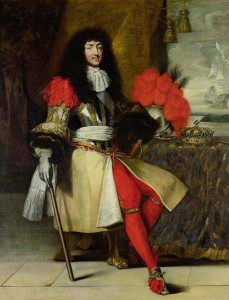 The role of fashion during Louis XIV’s reign was incredibly important. He increased the cost of clothes and fashion in general and made it a competition to see who would dress him best. It is widely believed that this incredible emphasis on fashion was in part because he wanted noble people to go into debt.
The role of fashion during Louis XIV’s reign was incredibly important. He increased the cost of clothes and fashion in general and made it a competition to see who would dress him best. It is widely believed that this incredible emphasis on fashion was in part because he wanted noble people to go into debt.
The king required a different dress code for every event, depending on what time of the day it was and depending on the season. He used fashion as a way to control the nobility and to keep an eye on them as another part of his social strategy.
The Decline of Louis XIV: Religious Persecution
Things were deteriorating in France by the end of the seventeenth century. A “Grand Alliance” between Spain, England and the Roman Empire attacked France. This war went on for almost an entire decade and is known as The Nine Years’ War.
In 1685, the devoutly Catholic King Louis XIV attempted to establish religious uniformity throughout France by revoking the right of the protestants, called Huguenots, to worship. This was referred to as the revocation of the Edicts of Nante. He disallowed Catholics from marrying Protestants and encouraged protestants to convert to Catholicism.
Many Huguenots fled the country to seek more religious freedom, moving to Holland and Great Britain. Many of these protestants were highly skilled and had money, which they took with them when they emigrated from the country. Louis XIV’s religious intolerance reached a boiling point when he banned emigration and started persecuting protestants. This caused considerable strain in France and heightened tensions with other European countries.
The Fall of Louis XIV’s Foreign Policy
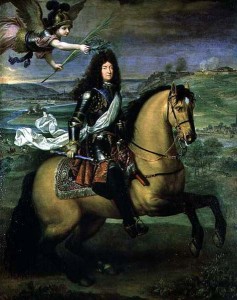 Throughout the last years of his reign, this king was plagued with diplomatic and military failures. European nations reacted to France having become the biggest power in the region. With resources already strained, many wars under Louis XIV’s ruling greatly effected the French economy. The Nine Years’ War was the first of these wars, with the main portion of fighting taking place within France’s borders. Although the country did not lose much territory, its resources were considerably drained. The treaty of Ryswick ended the war and the Grand Alliance was disbanded.
Throughout the last years of his reign, this king was plagued with diplomatic and military failures. European nations reacted to France having become the biggest power in the region. With resources already strained, many wars under Louis XIV’s ruling greatly effected the French economy. The Nine Years’ War was the first of these wars, with the main portion of fighting taking place within France’s borders. Although the country did not lose much territory, its resources were considerably drained. The treaty of Ryswick ended the war and the Grand Alliance was disbanded.
The Spanish Succession was the next war that was fought. Spain and several adjoining territories had a ruling king with issues complicating who would be next heir to the throne. Louis XIV’s main goal was to defend the right of his grandson Philip V to take the crown. This was a long war that lasted nearly fifteen years.
The ruling monarch of Spain, Charles II, suddenly changed his will while in his deathbed. He was convinced by his advisers, due to France’s political might, that he should give the empire to Philip V, Duke of Anjou. Louis XIV had to choose between dividing the territories of Spain, and thus avoiding war, or accepting Charles II’s offer and risking war. Although Philip V was generally accepted by European nations as the legitimate king, tensions rose because of the perceived alliance between Spain and France. A treaty resulted in a division of land with France managing to retain most of its territory.
The Results of The Spanish Succession War
The war was very expensive and although France did not lose any land, it did lose a lot of money. The economy of France kept declining and the populace grew hungry and tired. Another effect of the war the overexertion of France which may have led to the Anglo-Saxon world domination that followed.
Louis XIV and His Women
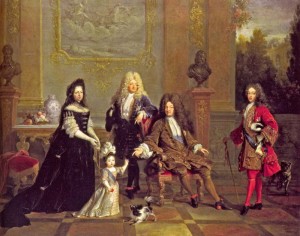 Perhaps the most respected part of this king’s ruling is that he made all his illegitimate children legitimate and helped to integrate them fully in aristocratic society. This allowed them to take on official roles and serve the monarchy when necessary.
Perhaps the most respected part of this king’s ruling is that he made all his illegitimate children legitimate and helped to integrate them fully in aristocratic society. This allowed them to take on official roles and serve the monarchy when necessary.
Before the king was married to the Infanta of Spain, he had a relationship with Cardinal Mazarin’s daughter. She was several years older than him. He wanted her to be his wife, but instead he went on to marry Marie Therese of Austria. The King was never in love with her, but they respected each other and had many children together. Marie Therese was widely known as simple-minded. She enjoyed playing cards and never learned French. A year after Louis XIV became religious again, and vouched to be faithful to his wife, she became ill and died at the age of 45.
Louise Françoise de La Baume Le Blanc de La Vallière, Henrietta of England’s sister-in-law, was Louis XIV’s mistress for around five years. He had four children with her. Both children were legitimized and his mistress was made a duchess. She retired to a convent a few years later. Françoise Athénaïs marquise de Montespan replaced Louise Françoise de La Baume Le Blanc de La Vallière as the king’s mistress and had seven children with him, all of whom were highly educated. Their affair was discreet and she also went to a convent to spend the last years of her life.
Françoise d’Aubigné marquise de Maintenon was the Louis XIV’s second wife. She was the most highly educated woman in court and 32 years old when she married Louis XIV. She was a great influence on the King. She was a remarkable woman that spent the later parts of her years dealing with education by devoting her time to academies and writing essays about education.
King XIV’s Later Years and Death
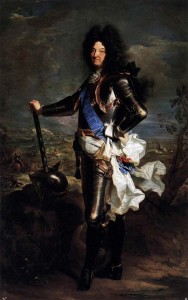 The last years of King Louis XIV’s life were not happy ones. He was unable to get over the many tragedies that had been suffered, both personally and by the country he ruled. He was also not able to get his finances back under control. Additionally, some unsavory alliances caused him to alienate the public and lose the respect that many loyal Frenchmen and women gave him.
The last years of King Louis XIV’s life were not happy ones. He was unable to get over the many tragedies that had been suffered, both personally and by the country he ruled. He was also not able to get his finances back under control. Additionally, some unsavory alliances caused him to alienate the public and lose the respect that many loyal Frenchmen and women gave him.
Louis XIV had lost all direct decedents but two of his illegitimate sons and granted both of them Prince of Blood titles in his will, but they were stripped of this power by his successor. He died in 1715 after ruling as king for 72 years. He was buried at the Basilica of St. Dennis.
